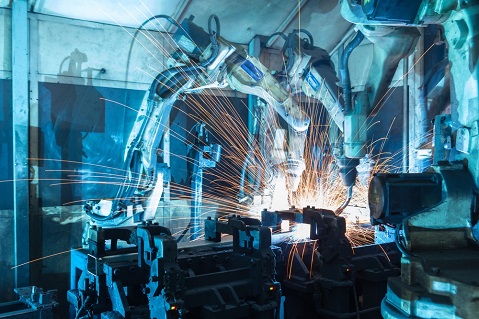Canadian News June 24, 2016
Automation to Replace 42% of Canadian Jobs
Over 40% of Canadian jobs will be replaced by automation over the next two decades. That’s according to a new study by the Brookfield Institute for Innovation + Entrepreneurship, a think tank affiliated with Ryerson University in Toronto.

In the report, entitled “The Talented Mr. Robot: The impact of automation on Canada’s workforce,” Brookfield policy advisor Creig Lamb states that the majority of positions at the highest risk of being replaced by current automation technology are in office support and general administration; sales and services; transportation and distribution; and lower-skilled technical labor in health and science industries as well as manufacturing and construction. Together, these jobs represent about 41.9% of Canada’s workforce.
The data was compiled as recent technological developments have allowed automation to take over increasingly complex responsibilities, including “cognitive, non-routine tasks and occupations, such as driving and conducting job interviews,” according to the report. To put together the data, Lamb used recent academic research on upcoming automation technology as well as employment statistics from Canada to determine whether jobs had a low, medium or high probability of automation.
“We are hoping that this report will help Canada’s public and private sectors gain a deeper understanding of how automation impacts employment so that they can begin planning for the future,” writes Lamb.
Laura Hansen, president of Image Group Inc. (asi/230059) in Vancouver, isn’t surprised by the study’s findings, since automation is already impacting the promotional industry. “Administration and order processing roles are becoming more automated,” she says. “Customers can now choose to work closely with a distributor and supplier, or simply order online through an automated website.”
Automation technology can actually be a boon to companies’ profitability in service, data management and transactional costs, according to Marc Giroux, vice president of sales for Saint-Laurent, QC-based Spector & Co. (asi/88660). “This where we are seeing substantial growth and innovation. The pay-back period on investments in automating certain administrative tasks, for example, is quick and easy to calculate, which makes the investment a no-brainer for management.”
Giroux believes that the industry positions at the highest risk of being automated are invoicing, order entry, communications and information delivery. At lowest risk are those that rely on developing relationships with clients. “A great website with a ton of features will never be as effective as a field sales rep or customer service/account manager,” he explains. “Positions on the front lines such as sales and service that are critical to relationship development are at the lowest risk.”
Kathy Cheng, founder and president of Redwood Classics Apparel (asi/81627) in Toronto, which produces wholesale garments made by hand in Canada, believes that hard-goods suppliers will be affected by automation more than apparel manufacturers. “The highly skilled, highly technical positions will remain, since these roles require a level of expertise and knowledge that machines can’t replace,” she says. “There’s simply no substitution for apparel made by hand. We also might see the emergence of a wider selection of hard goods options, since these items tend to be more automation-based, versus apparel manufacturing which requires many human touchpoints.”
The study also found that 36% of Canada’s workforce is employed in positions at low risk of automation, which are expected to produce more than 700,000 new jobs by 2024.
